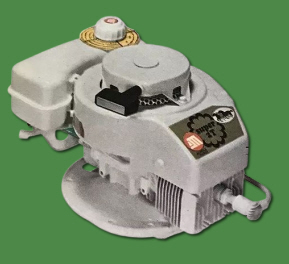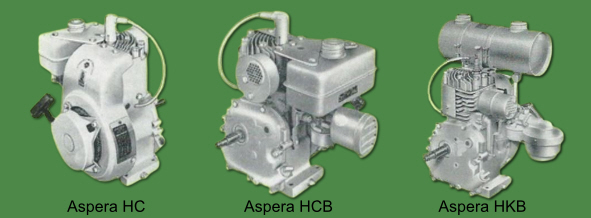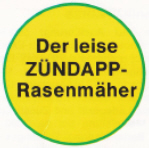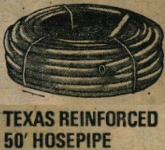Aspera & Tecumseh Engines
March 11, 2025 in Articles
Tecumseh is one of the main engine brands we see on many vintage machines, including mowers, rotavators, wood chippers, and even mini bikes. In the USA, Tecumseh bought the small engine manufacturer Lauson in 1955, and in 1956 the company Power Products which made 2-stroke engines. The Tecumseh engines owe their origins to the products from these companies.
In 1960, Tecumseh gave Aspera Motors a licence to build engines; they were produced in Torino, Italy. Reports in 1960 stated that only six basic Tecumseh models were used to develop the whole Aspera range – this gave economic mass production and the interchangeability of parts. Aspera said that the vertical and horizontal engines were being built at a combined rate of 3000 per day.
It should be noted that there are differences between the engines that Tecumseh produced in the USA and the Aspera engines made in Italy.
Tecumseh also granted a license to James N. Kirby Automotive Pty, Ltd, Australia for Lauson 4- and 2-stroke engines. Hence the Kirby engine link with Lauson and Tecumseh. In Australia, in the 1960s, the Kirby engines were fitted to mowers made by Turner, Scott Bonnar, Pace, Pinnock, Victa, and others. The engines can be found on several UK machines including the early-1960s Mountfield mowers with 4-stroke engines and wind-up starters.
In the 1960s and ‘70s, Aspera engines made in Italy found their way onto many machines from major brands including Webb (pictured), ATCO, Mountfield and Hayter rotary mowers and Crown and Flymo hover machines. But the engines seemed to be the lesser-known alternative to Briggs & Stratton, Kohler and Tecumseh.
Many folks’ knowledge, mine included, of Aspera engines probably doesn’t stretch far beyond the basic vertical engine 4-stroke and 2-stroke models on the above mentioned machines.
However, Aspera produced a vast range of vertical and horizontal engines for rotary and cylinder mowers, tillers, chainsaws, outboard motors, water pumps, and anything that needed powering.

Models that can be found on rotary mowers include the vertical shaft 4-stroke LAV 30 (3 hp – 127cc), LAV 35 (3.5 hp – 148cc) and LAV 40 (4 hp – 172cc). These engines were advertised with automatic compression release, fuel shut-off valves, optional heavy-duty flywheels, optional side-mounted PTO for wheel drive etc, and top-mounted or side-mounted recoil starters – image, right.
In the UK, at the start of the 1960s, the Aspera engines were introduced by Mackay Industrial Equipment Ltd, Central Way, Feltham, Middlesex. Subsequently, they were handled by Aspera Motors (England) Ltd, in the 1960s they were at 16 National Works, Bath Road, Hounslow, before moving to 152/154 Commercial Road, Staines, Middlesex. In the 1980s the trading name changed to Tecnamotor (UK) Ltd. Their adverts claimed that Aspera was the ‘leading manufacturer of small industrial engines for the European lawn mower industry’, which they no doubt were, but in the UK getting past the other established brands being used was not easy.
In 1978 they were advertising the new model LAV 172, a 4-stroke, 4 hp engine (Image, right. Note the Aspera stickers on the blower shroud). The intake and exhaust valves were made of special martensitic steel, it had a new piston design, an aluminium conrod, and a cast iron liner for long life. This engine was advertised as having improvements in reliability.
Discussed during 1981, and with a formal understanding on February 16th 1982, Fiat and Tecumseh entered into a joint 50/50 venture to build Aspera engines at Torino. The name Tecnamotor was created. Though in 1989 Tecumseh bought out Tecnamotor. Tecumseh stayed at the Torino factory until 2006.
Introduced in 1980 were the BV series engines. These continued to be built under Fiat/Tecumseh. Models included the vertical-shaft models BV150 (3.5 hp, 148cc) and BV172 (4 hp, 172cc) which were ideal for rotary lawn mowers.
Advertising for the BV engines (Image, right) detailed a positive force-fed oil-pump. This meant that even when the oil level was at a minimum, they could continue to operate on gradients that other 4-stroke engines couldn’t – an ideal choice for hilly lawns or undulating grassed areas. The engines were also designed to be quiet, easy to maintain, reliable and ‘built to last’.
The BV and LAV models were the most prominent through the 1980s. The LAV included the LAV 30, 35 and 40.
Tecumseh produced a varied range of engines, and in the early 2000s their Italian website (now defunct) detailed the last Italian-made Centura, Enduro, Formula, Prisma and Vantage engines for mowers, tillers, generators and pressure washers.
The Aspera/Tecumseh factory was located at Strada delle Cacce 99, Torino (Turin). Tecumseh vacated the factory in 2006. For many years it has stood empty awaiting redevelopment. It can be found on Google Maps: https://maps.app.goo.gl/Y25KaC7cg94bBw5E7

This article was not that easy to research – particularly the Tecnamotor name. So, if anyone can add additional information, or even correct anything on this article, then there is a VHGMC forum thread: https://vhgmc.co.uk/forums/topic/aspera-engines-2/



















































